Niihau is the westernmost and seventh-largest inhabited island in Hawaii. According to a 2010 census, 170 people were living on the island. However, witness accounts estimate that the population is more than 35-50 people. There are no telephone services, paved roads, stores, or restaurants. People travel mainly by horses and bicycles. Residents on the island live rent-free, because, well, what are you really paying for anyways? The island runs off of solar power and water is attained from rainwater. Fun fact – the island has the only school in Hawaii that runs completely off of solar power for its electricity source.

The island was purchased in 1864 by Elizabeth Sinclair, a plantation owner in New Zealand and Hawaii. She bought Niihau for a mere $10,000 from the Kingdom of Hawaii. The island was later passed on to her descendants, the Robinsons. In 1915, Sinclair’s grandson, Aubrey Robinson, decided to close off the island to most visitors in order to preserve its indigenous culture and wildlife. Even relatives of the inhabitants had to obtain special permission.
Fort Knox
During WWII, the depository safeguarded the U.S. Declaration of Independence as well as the U.S. Constitution. It also held the Magna Carta and other important historical documents. In addition to these sacred items, Fort Knox stored illegal substances during the war and into the Cold War. Synthetic painkillers were not yet invented, and the U.S. feared being cut off from its source of opium supply.

If you’re dreaming of touring the gold mecca, you can add that to your bucket list of "things that will never happen." In its history, it was opened to the public only twice: once for the news media and the second time for Congress in 1974. And never again were its doors opened.
Inside the Fortress
Underneath the fortress-like building is the gold vault, lined with granite walls and protected by a blast-proof 20-ton door. Plus, Depository members will have to put in several number combinations known only to them. Beyond that door, you'll find smaller compartments for additional protection. The depository is surrounded by fences and guarded by a special U.S. Mint Police force, and due to its location within the army base Fort Knox, it has even additional security from Army members.

If you are crazy enough to try and break in, you will be met with a dozen different security measures. Tough luck trying to get past even just one of them. The security includes alarms, minefields, barbed razor wire, electric fences, cameras, and armed guards and for the grand finale, all of the Army units based at Fort Knox have gadgets like Apache helicopters ready at their disposal.
The Mormon Church Secret Vault
Just a short distance outside of Salt Lake City and one mile up Little Cottonwood Canyon lies Granite Mountain. Ironically, and despite its name, the place is composed mostly of quartz monzonite. Excavated 600 feet into the north side of Little Cottonwood Canyon is the Granite Mountains Record Vault, which the Mormon Church has ownership of.

A second vault is located two miles further up the canyon. But this vault is owned and run by Perpetual Storage Inc., and its purpose is for-profit. The vault serves multiple purposes, such as storage for records, a center for administrative offices, shipping and receiving docks, and a laboratory for restoring microfilm.
Granite Mountain Vault
Records stored in the Mormon Church’s Granite Mountain Record Vault include 2.4 million rolls of microfilm with around 3.5 billion images of family history and genealogical records. The vault's microfilm library increases yearly by up to 40,000 rolls. Now you know that when the Mormon Church says they’re a family-centered faith, they are by no means joking.
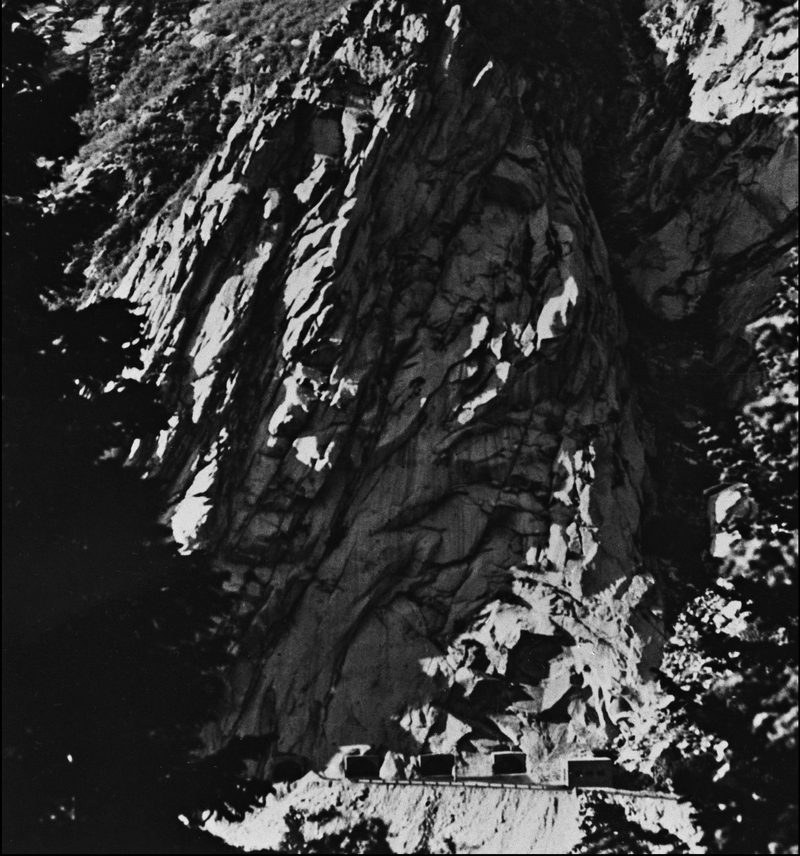
For clear security reasons, accessing the Granite Mountain Vault is forbidden. No matter how hard strong believers and regular curious people like you and us have tried, the no-entry sign is still standing high. Maybe in years to come, when there is world peace, they will be access to this place, too.
The Yanomami Village
This photo of a Yanomami village was captured by a helicopter. The villagers had probably never seen an aircraft before, as they were one of the most remote groups of people in the world. They are pictured here staring in wonder at the helicopter, probably positive they were gazing up at extraterrestrial beings from outer space.

The village is located on the Brazilian side of the Brazil-Venezuela border. Just think of it. You travel all the way to the south continent, you plan your trip in advance, and then discover no one is going to let you in. Next time, plan better.
Zone Rouge
The Zone Rouge, which means “The Red Zone,” is a group of off-limits areas located in the northeastern part of France. The French government blocked off these areas following WWI and never re-opened some of them back to the public. The areas were deemed too damaged by the war to be appropriate for human use.
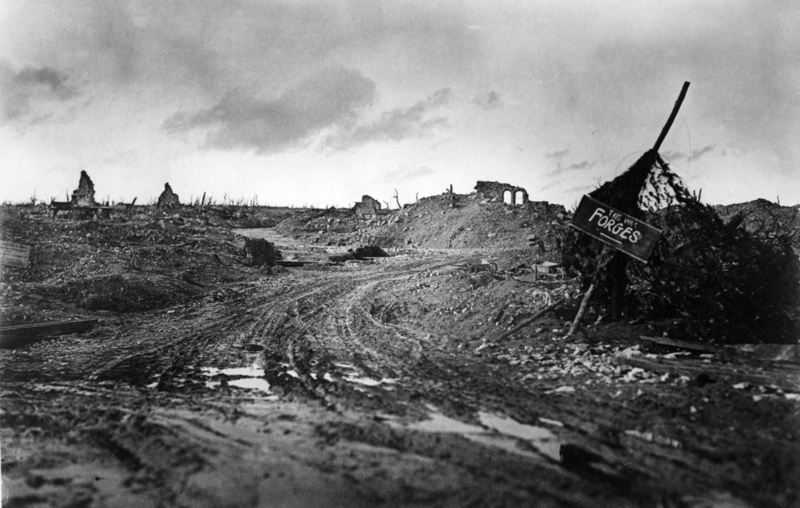
Zone Rough is 460 square miles and was destroyed and damaged following human conflicts. Instead of cleaning up the battlefield and coming to some sort of agreement, the French government decided to let the area go back to nature and allow it to go wild.
Return to Nature
Instead of trying to revive the land, the French government decided to block it off to humans and return it to nature. It closed it off and let nature be in charge. The Zone Rouge is rumored to have had a considerable amount of human and animal remains on the land.

Its danger lies in the fact that millions of pieces of artillery are still scattered about. Towns in the Zone have never been rebuilt for obvious reasons. Maybe one day, the French authorities will decide to bring this piece of land back to life, but until then, it is off-limits.
Svalbard Seed Vault
If there’s a need to make use of this place – it means that an apocalypse has taken place and we’re all doomed. The Svalbard Global Seed Vault is a seed bank located on Spitsbergen, an island that belongs to Norway. It is located in the middle of the Arctic and situated close to the North Pole.
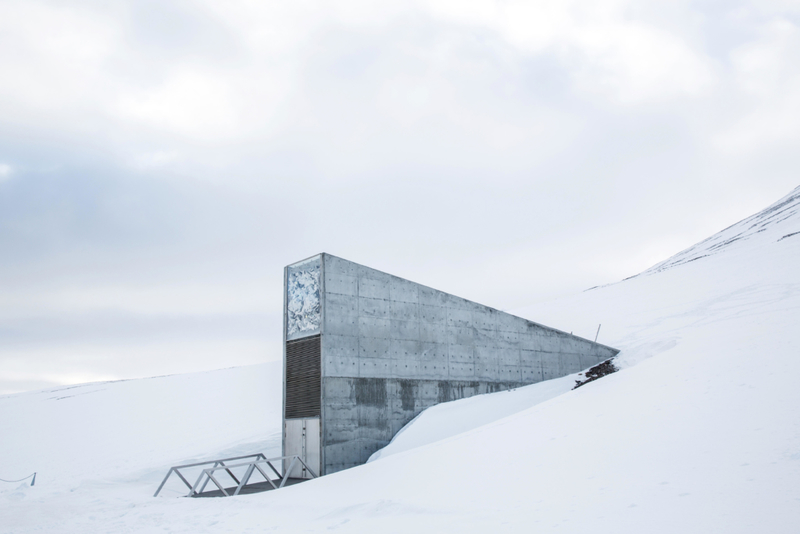
The vault stores multitudes of seeds in the chance that a global catastrophe wipes out most of the earth’s crops. Currently, it has about 864,000 distinct seeds and the space to hold up to 4.5 million. It houses 1/3 of the world’s most important food crop seeds inside of it.
Fully Computerized
The vault is built 390 feet deep into a sandstone mountain. No permanent staff is employed there and there is not a single person who has all the codes necessary to get inside the structure. These seeds will be kept safe for an estimated couple hundred years, and a study carried out to test the feasibility of the vault has suggested that the seeds can even be preserved for a couple thousand years.

The seeds are each stored in a three-ply foil packet sealed with heat to ensure that no moisture can enter. It’s fully computerized and is monitored remotely. The vault opens only to special visitors and for the few days a year when it receives new seeds.
Ise Grand Shrine
Over 100 shrines dedicated to the goddess Amaterasu-Omikami are placed in this sacred space in Japan. It was built around 4 BC. Legends claim that the goddess chose this site for herself thousands of years ago due to its peacefulness and isolation. The shrine holds several spiritual and sacred objects that are of great importance, like the Sacred Mirror or Yata no Kagami.

Only for Royals
Don't waste your time trying to sneak in to see the inside. The only people granted admission are priests and priestesses of the royal family. Plus, you’d be up against the Japanese military and an intense-looking fence.

The public can see the thatched roofs of the shrine. The structure is destroyed and rebuilt every 20 years, in accordance with the Shinto belief of death and rebirth.
Surtsey
Just off the coast of Iceland, there is a volcanic island called Surtsey. It was formed by a series of volcanic eruptions. It has been the subject of scientific research for years, as the island has evolved from a volcanic landscape that was absolutely barren of life, to a place where plants and animals are now thriving.

Due to its significance to scientific research, people are prohibited from visiting the island.
Not Open to Humans
Visitors would pose a risk to the natural processes happening which currently remain unaffected by outsiders. Other than various scientists who come to do research, the island is not visited by humans.

There are approximately 12 species of birds, grey seals, orcas, and some types of plants living on this volcanic island.
North Sentinal Island
North Sentinel Island is part of the Andaman Islands, an archipelago in the Bay of Bengal. On the island, you will find the Sentinelese people, one of the last groups of remote humans who remain completely disconnected from the outside world. They reject any form of modernization, living primitively, and as hunter-gatherers. The tiny island is approximately 28 square miles. You won't want to visit the island for a number of reasons. First of all, getting to the island will pose a risk because it is surrounded by dangerous coral reefs which are not on a map. And once you get closer to the island, you will face death by the Sentinelese people, who are known to act violently when outsiders approach.

Travel to the island is strictly forbidden in order to prevent the tribes-people from contracting diseases to which they aren't immune. Attempted contact has been made with the islanders in the past, but for the most part, they haven’t been successful. Beginning in the 1960s, Indian explorers landed on the island every few years to try and develop friendly relations with the Sentinelese. In the mid-’70s, things took a dramatic turn when a Sentinelese fighter shot a National Geographic film director in the thigh with an arrow.
Visitation Prohibited
In 1991, there was successful contact made with the help of gifts and offerings. However, the Indian government decided that there was no benefit to the interactions and that they only jeopardized the health of one of the last uncontacted peoples. So, in 1996 visitation to the island was officially prohibited.

In the last decade or so, there have been two fatal incidents taking place on the island. The first was in 2006 when two fisherman fishing in illegal waters approached the area and were killed by the Sentinelese. In recent times, in November 2018, John Allen Chau arrived at the island with the intention of preaching Christianity to the Sentinelese and was killed.
White Gentleman's Club
The White Gentleman's Club is the oldest gentleman's club in London and is widely regarded as the most exclusive club in the city. On St. James’s Street in London, the club was founded in 1693. It has seen a pretty impressive list of members over the years.
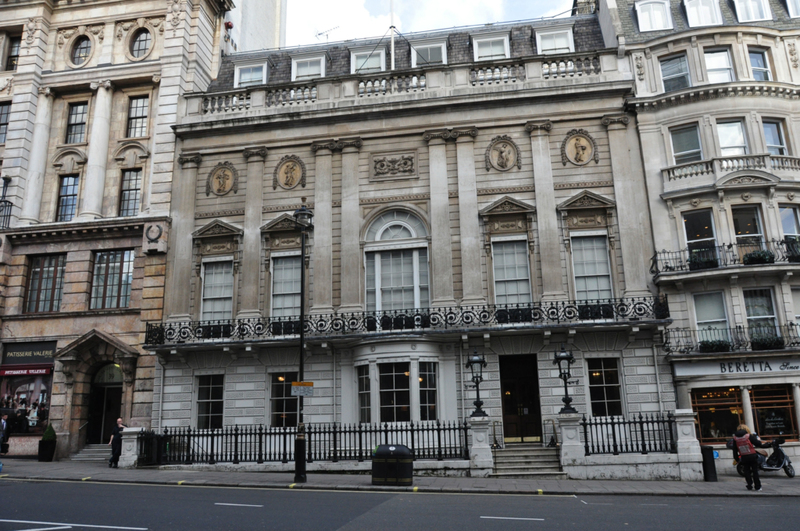
Currently, the list of members includes such men as King Charles III, Conrad Black, Prince William, and Tom Stacey. David Cameron used to be a member but gave up his membership due to disagreeing with the men-only rule. The only woman who has been in the club other than employees was the late Queen Elizabeth II, who came for a brief visit in 1991.
What's Inside?
The building has three stories, including a basement, an attic, a private dining room, and a billiards room.
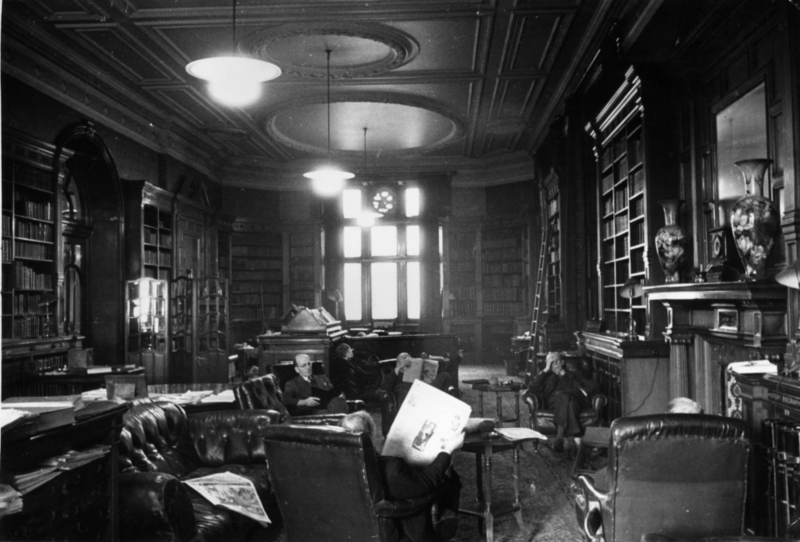
To be a member, you need to shell out $85,000 a year. Plus, you have to be invited to get in. The prices at the club are quite astronomical. For a Coke, you will pay $20. However, the elite rotating menu probably has the men forgetting how much they’re spending. Plus, the exclusive men who receive an invite have the means to afford it anyways.
Area 51
Area 51 is the apparent location of secret military aircrafts, high security, and UFOs. The area is an outpost of the Edwards Air Force Base, however, the main purpose of the area is not known.

It is thought that the area is where the army tries out its black projects, testing out secret weapons and aircraft which haven’t yet been completed.
Groom Box
The site is also known as the “Groom Box” due to its close location to Groom Lake. The area measures 6 by 10 miles, an area where airspace is also restricted. Unauthorized military planes that are caught flying over the area may face punishment.

The government is very secretive about the area which has led conspiracy theorists to formulate different theories about what the area is really used for. The area is monitored by cameras and underground motion sensors 24/7. Photography is banned and if you are caught moseying around the area, you can end up facing serious repercussions.
Coca-Cola Vault
The Coca-Cola recipe is so sacred and secretive, that the company stores it in a big closed vault where entering is most definitely off-limits. While there are no top-secret government operations or weapon development being carried out in the vault, the iconic recipe for America’s favorite and one of the oldest soft drinks is highly protected.

The drink was first created in 1886 and was one of many “cola” drinks on the market that claim to have health benefits.
The Top-Secret Recipe
The recipe was protected in the Guaranty Bank in New York from 1919 to 1925 and then transferred to the Trust Company Bank. It was held there until 2011.
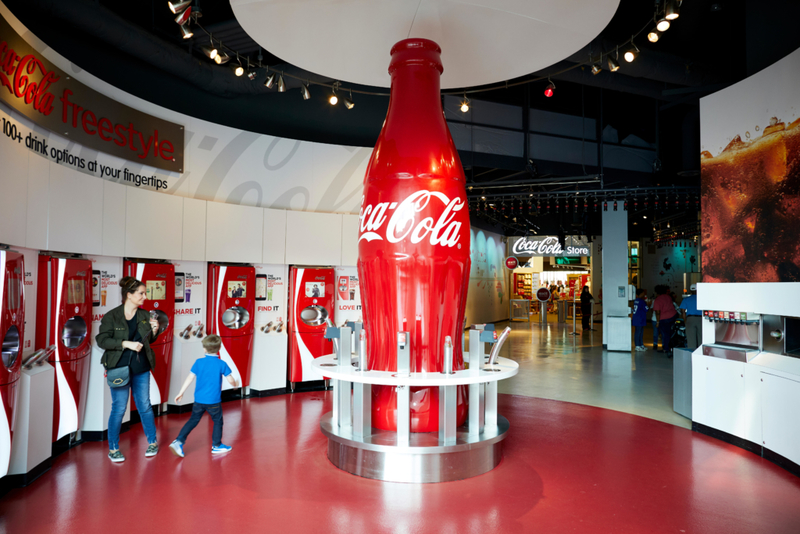
Nowadays, it is on exhibit for visitors to come close to, but they won't be able to make out what the recipe says as there are thousands of pounds of metal preventing onlookers from learning how to concoct one of America’s most loved drinks.
Chapel of the Ark of the Covenant
According to the Book of Exodus, the Ark of the Covenant, also called the Ark of the Testimony, is a gold-covered wooden chest with a lid cover that contains the two stone tablets of the Ten Commandments. Some texts in the Hebrew Bible also describe the ark as having Aaron's rod and a pot of manna. Rumor has it that this chapel is the final resting place of the Ark of the Covenant.

Due to the righteousness of the area, nobody is allowed to see the Ark, including even the Ethiopian president.
Indiana Jones
However, there is a single monk who watches over the ark and never leaves the chapel grounds.
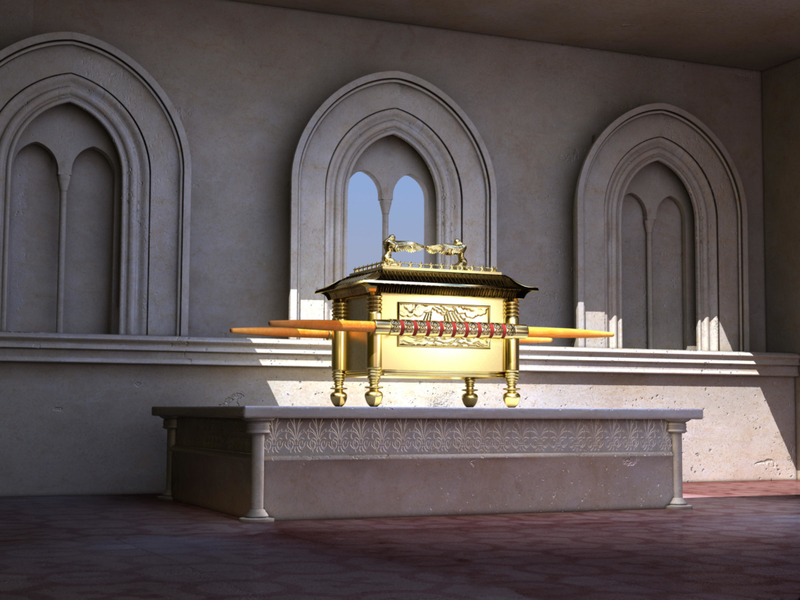
You may have heard of the Ark of the Covenant, even if you're not a Bible reader. "Indiana Jones" fans? Well, the professor-archaeologist-adventurer in the movie "Raiders of the Lost Ark," goes looking for the Ark of the Covenant.
Google Data Centers
It shouldn’t come as a surprise that the billion-dollar technology company Google takes some pretty heavy measures to protect its data, both physical and digital.

If you try to step foot near the data center, you will face fences, checkpoints, badges, and biometric iris scans, just to name a few.
Security Measures
On top of that, there are other security measures in place to keep out unwanted guests, however, Google refuses to disclose what they are. The tours of the centers are highly off-limits. In fact, less than 1 percent of Google's 60,000 employees are allowed to enter any of the company's data centers.

All existing data centers use about 2 percent of the world’s electricity, so Google set out to protect their data in a greener and more environmentally friendly way. They use wind turbines to power some of their data centers in addition to energy-efficient facilities.
Jiangsu National Museum
Have you ever heard of a museum where only the country's citizens are allowed in? Here you have it. At the Jiangsu National Security Education Museum, only Chinese have the right to enter. Foreigners are strictly prohibited.

The reason for this is that the museum stores sensitive spy information. Several of its halls display the history of Chinese security devices and practices throughout time all the way back to 1927 when communists were in battle against their Nationalist enemies.
Classified
An employee of the museum who spoke on the condition of anonymity confirmed that the museum houses things like classified documents, guns disguised as everyday objects, weapons, and uniforms.

People who appear to be Westerners are turned away from the museum, however, those who have Chinese features can usually enter without being probed.
Chornobyl
The Chornobyl nuclear destruction on April 26th, 1986, was the deadliest and biggest nuclear power plant accident in history. The explosion occurred at the Chornobyl Nuclear Power Plant during a routine test. The power plant exploded after the tests on the reactor were done incorrectly and the operators lost control. Due to the lack of safety mechanisms on the reactor, it proved unstable when operated at low power. The accident caused fire and smoke to emit radioactive particles into the sky which then spread over western USSR territory and the rest of Europe. The city of Chornobyl was evacuated shortly after the disaster.

The incident directly caused the death of 31 first responders and power plant workers due to acute radiation syndrome. However, radiation-related deaths didn't end just there. They continue to rise to this very day. By 2008, the count of radiation-related deaths was 64. The Chornobyl Forum has estimated that the death count could potentially reach 4,000 among those who were exposed to the most concentrated radiation particles, which includes 200,000 first responders, 116,000 evacuees, and 270,000 residents.
Radiation Zone
Due to the health risk imposed by traveling to the radiation-affected zone, travel to Chornobyl is highly restricted. The Exclusion Zone includes a 19-mile circle around the site of the accident which is virtually a ghost town. Despite most residents fleeing, there are still 300 residents who chose to stay. Many of their houses are marked with a sign "Owners of this house live here." What's even more, wildlife has become vast here due to the lack of human occupation and in many places, the forests have filled out.

If you’re brave enough (and crazy enough) to risk it, you can take a guided tour of Chornobyl and the surrounding towns for a short time frame, and even stay in the one hotel in the area. Even then, you’re still vulnerable to radiation as you near the epicenter of the explosion and with that, health risks like cancer. Ukrainian officials estimate that the Exclusion Zone won’t be safe for human residency for another 20,000 years. So, don’t be expecting to relocate to the area anytime soon.
Bank of England Vaults
The Bank of England is one of the most powerful institutions in the United Kingdom due to its sheer size, responsibilities, and holdings. The institution holds the power to set interest rates and issue banknotes in the British currency. The central bank is also one of the largest holders of gold in the world, holding gold reserves of the UK as well as 30 other countries. They are stored in vaults that are spread over two floors.

The huge underground floor space is bigger than the third-tallest building in the city, Tower 42. and takes three-feet-long keys to open it. They hold 5,134 tonnes of gold which is estimated to have a market value of £200 billion. The value suggests that the vault could hold as much as 3% of the world's gold mined throughout human history.
RAF Menwith Hill
The Royal Air Force Menwith Hill is an air force station in England that contains an elaborate satellite ground station. It is also a communications intercept and missile warning site. It has been referred to as the largest electronic monitoring station on Earth.

Menwith Hill houses many satellites owned and operated by the US National Reconnaissance Office.
Global Spy Network?
Activists have spoken out against the activities taking place at the station, stating that they are undemocratic and invasive because of such programs as the ECHELON Interception System – a system that leaks into private and commercial communications.

In 1999, the BBC released a report that the Australian Government confirmed the existence of a global spying network that can intercept any communication on Earth with the USA and Britain being the chief protagonists. They also confirmed the connection between Menwith Hill to the National Security Agency in Fort Meade, Maryland. Despite the claims made, both the U.S. and Britain continue to deny that the spy network exists.
Moscow Metro-2
Metro-2 is the informal name for the apparent secret underground metro system which runs in parallel to the public Moscow Metro but exceeds it in length. The system was purportedly built, or at least started, during the time of Joseph Stalin’s rule and was given the code name D-6 by the KGB.

The Russian government is unwilling to comment on the existence of Metro-2.
Secretive Metro
Rumor has it that Joseph Stalin ordered the secretive metro to be built for Russian secret services and heads of state to use. There are reportedly four lines connecting a central location to KGB outposts.

Whether it really exists is still a mystery. There have been interviews over the years involving people who claim to have been involved in the metro's construction. Recently, the demolition of the supposed spot of the Metro-2 uncovered a tunnel that could be part of a larger system. However, Putin’s tendency to keep state secrets has us believing that he won’t admit to this secret train system any time soon.
Pine Gap
The Australian Earth station, also known as Pine Gap, is located about 18 kilometers southwest of the town of Alice Springs, Northern Territory in the center of Australia. The station is run by both Australia and the United States.

The facility contains a large computer complex with 14 radomes protecting antennas and employs over 800 people. David Rosenberg, a long-term NSA employee at Pine Gap said that the chief of the facility at the time of his service was a CIA officer.
Strategic Location
The strategically significant location of Central Australia is able to control United States spy satellites as they pass over one-third of the globe which includes China, the Asian parts of Russia, and the Middle East. Due to the area’s very remote location, spy ships passing in international waters are unable to intercept the signal.
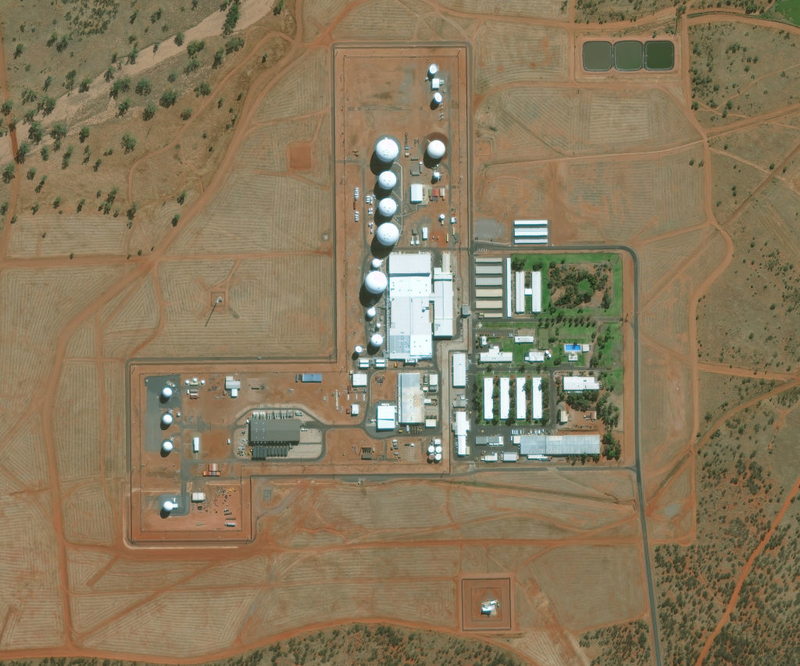
The facility is a critical component of the local economy with most operations being overseen by the CIA. The location is critical as it controls satellites that pass over countries that America has a vested interest in like China, Russia, and the Middle East. One of the most controversial operations that it’s involved in is U.S. drone strikes in the Middle East. There have been many protests against the operations carried out by Pine Gap.
Dulce Base
There is a conspiracy theory that claims that a jointly-operated human-alien underground facility lies under Archuleta Mesa on the border of Colorado and New Mexico, close to the town of Dulce, New Mexico, in the United States.
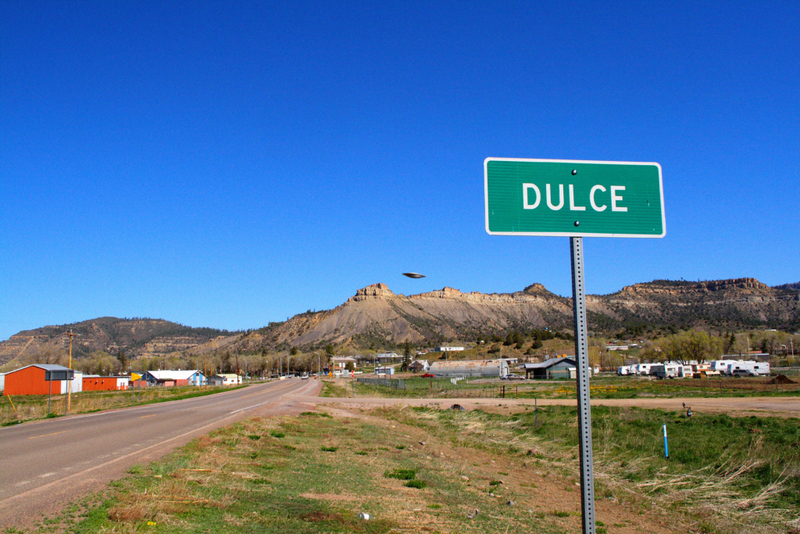
Dulce Base is supposedly an underground facility operated by aliens and humans together- one big happy working family.
Underground Base?
Paul Bennewitz, a businessman from Albuquerque, New Mexico believed that he was receiving alien communications in the 1970s and 1980s, and became convinced that there was an underground base.
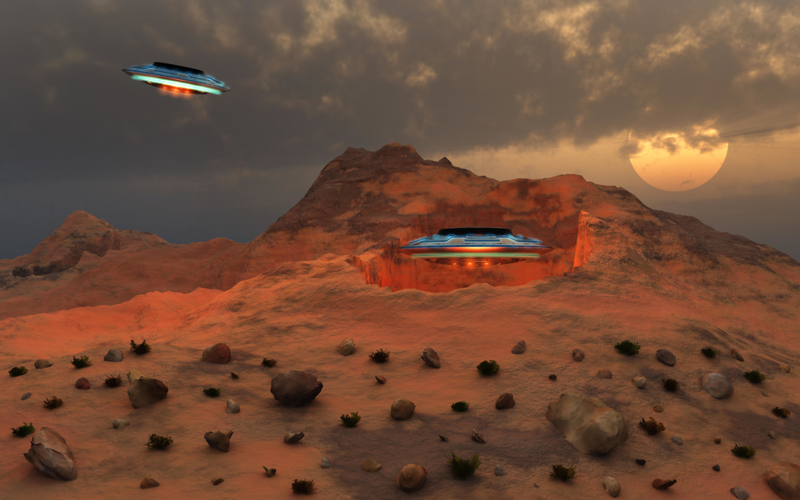
UFO conspirators of course believed the reports. However, while an underground base may actually exist, it probably isn’t the alien-human joint operation that Bennewitz reported. Underground missile stations did exist during the Cold War so, theoretically, they could exist. However, as of now, no proof of the location exists.
Room 39
Room 39 (officially named Central Committee Bureau 39 of the Workers' Party of Korea, AKA Bureau 39, Division 39, or Office 39) is a secret North Korean party organization that tries to find ways to keep the foreign currency slush fund for the country's leaders, first Kim II-sung, then, moving forward, Kim Jong Il and Kim Jong Un.

The organization allegedly is involved in illegal activities like counterfeiting $100 bills, producing controlled substances, and international insurance fraud.
North Korea's Seclusion
From these activities, they make between $500 million and $1 billion per year or more. Because of North Korea’s seclusion, it is difficult to assess the information. Many people suggest that operations of Room 39 allow Kim Jong Un his continued power by buying political support and helping to fund North Korea's nuclear weapons program.

Room 39 is the largest of three impactful “Third Floor offices” along with Office 35, tasked with intelligence, and Office 38, which handles legal financial activities. Room 39 is thought to be situated inside a ruling Workers' Party building in Pyongyang, close to one of the North Korean leader's residences. All three Offices were originally located on the third floor of the building where Kim Jong-Il's office used to be, hence the nickname "Third Floor."
Mezhgorye
Mezhgorye is a secluded town in the Republic of Bashkortostan, Russia, found in the southern Ural Mountains near Mount Yamantau, about 200 kilometers southeast of Ufa, the republic's capital, on the banks of the Malyy Inzer River.

It is not certain what purpose the complex serves, but it's assumed that a huge underground bunker exists in the chance of a nuclear disaster. The size of the bunker is unknown, but it has been suggested that it spans 400 square miles. The American government discovered the structure's existence in 1992 but the Russian government has kept quiet (like always) about the real purpose of the facility and the operations carried out there. Officials estimate that it took 10,000 workers to finish the structure.
Nuclear Warheads
According to a report by the former Time writer Kenneth R. Timmerman, the town stored 73 nuclear warheads. The Russian military chose this middle-of-nowhere location to store its nuclear weapons following the Cold War. The nuclear warheads stored there were SS-23s which are about 365 times the power of the bomb dropped on Hiroshima in 1945.

It's a relief that the warheads were taken apart, but the number of nuclear weapons this town hid is quite unsettling. Many believe that construction of the site began in the 1970s and was used as a receptacle for Russian treasures, as a food storage area, and as a nuclear bunker for military
Snake Island
Snake Island aka Ilha da Quimada Grande is an island which is located off the coast of Brazil. Its varied rocky and rainforest terrains are home to many critically endangered snakes- hence its name.

The name of the snakes that live on the island is golden lanceheads. Due to there being only one species on the island, the snakes are at high risk for inbreeding.
Venomous Snakes
Because of the high number of snakes on the island, the Brazilian Navy decided to restrict public entry to the island, the intention being both to protect visitors from the venomous species while also protecting the snakes against human presence. There is reportedly one snake for every meter of the island. This means if you were to visit the island, you would come up against 2,000-4,000 snakes slithering around.

Brazil is amazing, but you should probably skip this destination on your trip.
Vatican Secret Archive
The Vatican Secret Archive stores many important documents, some of which hold great historical significance. Some believe that it also hides important pieces of history.
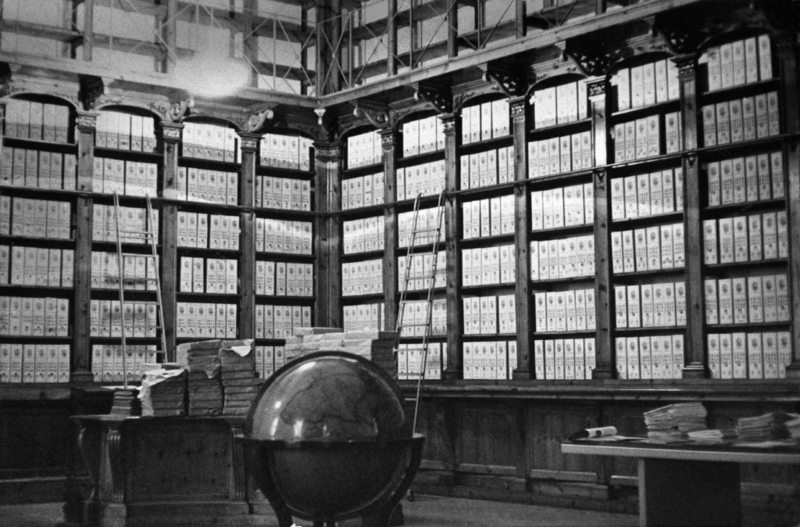
We do know what some of the contents are: Galileo’s trial transcript, letters from Abraham Lincoln, and King Henry VIII's letters.
The Hidden Archives
The archives were created by Pope Paul V in 1612 and 400 years later, some of those documents are finally on display. However, it is uncertain as to whether the church is hiding documents that shine an unfavorable light on the Church like anti-semitic beliefs and other backward ideas.

Not just anybody can skip past the Swiss guards and enter the archives that are open for viewing. Tourists, journalists, students, and armchair historians are never granted admission. Only scholars — and even their access expires after six months.
Bohemian Grove
Bohemian Grove has received a reputation as the place “where the rich and powerful go to misbehave.” Every year, in mid-July, Bohemian Grove opens its gates for a three-weekend camp inviting the most important men in the world to partake.

The event is put on by a private San Francisco men’s art club called the Bohemian Club. Access is granted by invitation only to musicians, artists, media execs, heads of state, and other people in power. Definitely not your average club.
Shady Rituals
The rituals and symbols surrounding this secretive society are quite shady. Those who have managed to infiltrate the secret encampment have not said the best things about the sights, sounds, and activities taking place there. One such person was Alex Jones, an investigator. He said “My lasting impression was of an all-pervading sense of immaturity: the Elvis impersonators, the pseudo-pagan spooky rituals, the heavy drinking. These people might have reached the apex of their professions but emotionally they seemed trapped in their college years.”

So essentially, a bunch of bros who continue to relive their frat boy days and, like many exclusive places, many conspiracies exist surrounding the events taking place at the camp. Some suggest that there is something cult-like taking place or that the influential figures take control over the world from their camp. But, let’s be honest. It’s clearly just a bunch of rich guys getting stupidly inebriated together. And the conspirators are probably jealous for not being invited.
Disney Club 33
While this club doesn’t have the secretive or shady reputation as say Room 39, it requires one to be filthy rich to get in. It’s located at 33 Royal Street in Disneyland. If you have the means to afford it, you can enjoy a five-course menu and alcohol. While you chow down on the fusion of French and New American cuisine, you can check out antiques.
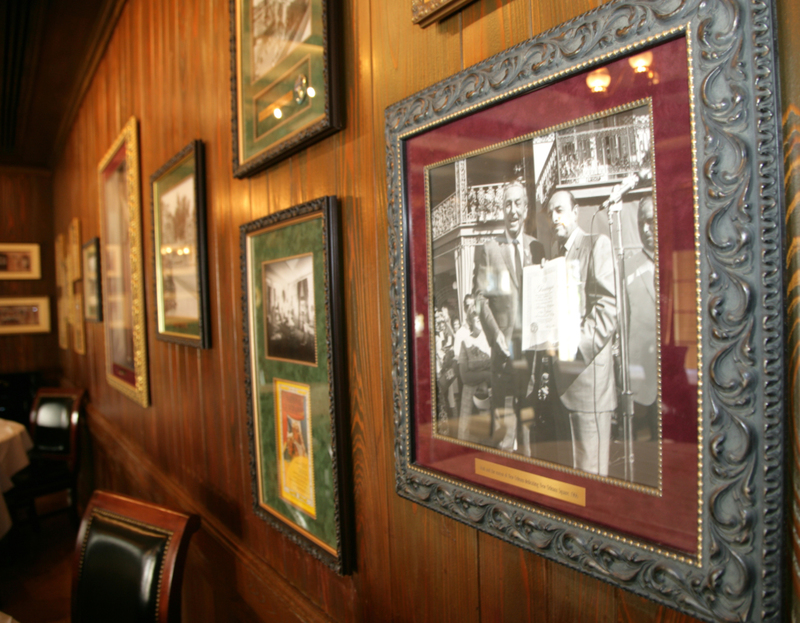
Those with membership to the club and their guests can enjoy exclusive access to resort experiences, which vary depending on the type of membership one has. In addition to the Club 33 restaurant, access may also include Le Salon Nouveau, a jazz lounge within New Orleans Square, and 1901, a lounge in Disney California Adventure; neither are open to the public. Club 33 is the only location within Disneyland Park to sell alcoholic beverages, although the park does have a park-wide liquor license and has set up bars for private events.
14-Year Waiting List
Alcohol is served at several locations within Disney California Adventure. However, seeing that DCA is a separate amusement park with its own entrance, the tradition still holds true that alcohol is not sold within Disneyland Park itself during normal hours.

The club first opened in 1967. As of 2011, there was a 14-year waiting list for new members. In order to join, you need to pay a $25,000 initiation fee as well as an additional $10,000 annual fee. If we had that kind of money, we would definitely choose that sort of joining fee over sorority and fraternity hazing rituals, but still, that is pretty rough. In recent times, the Club made headlines after it sent out 100 exclusive invitations to potential members to join the club.
Poveglia
There is a historical record of the island from 421 AD of being populated until its residents fled warfare in 1379. In 1776, the island became a quarantine station for people suffering from diseases for the next 100 years and later as a mental hospital. The mental hospital closed in 1968, and nowadays, the island isn't used for anything except for being featured on paranormal shows.

In 1348, Venice and Poveglia were hit by the Bubonic Plague. Poveglia, along with other small islands, became a quarantine colony. From fear of the chaotic spreading of the disease, Venice sent many ill citizens to the island. The dead bodies and the dying were burned on giant pyres. The island would once again see those fires burning in 1630 when the Black Death swept through the city.
Quarantine Station
Come the 20th century, and the island was again used as a quarantine station, this time for the mentally ill. The existing buildings were transformed into mental hospitals. The mental hospital was in operation until its closing in 1968. The island once again became vacant.

There are various legends concerning the haunting of the island, given the victims of plague and war who died here as well as the rumored mental patients who died on behalf of a crazy doctor who purportedly butchered and tortured them. Nowadays, the island is closed off to locals and tourists. In recent years, Italian construction crews thought to restore the hospital building, but they stopped their project without further explanation.
Niihau
Niihau is the westernmost and seventh-largest inhabited island in Hawaii. According to a 2010 census, 170 people were living on the island. However, witness accounts estimate that the population is more than 35-50 people. There are no telephone services, paved roads, stores, or restaurants. People travel mainly by horses and bicycles. Residents on the island live rent-free, because, well, what are you really paying for anyways? The island runs off of solar power and water is attained from rainwater. Fun fact - the island has the only school in Hawaii that runs completely off of solar power for its electricity source.

The island was purchased in 1864 by Elizabeth Sinclair, a plantation owner in New Zealand and Hawaii. She bought Niihau for a mere $10,000 from the Kingdom of Hawaii. The island was later passed on to her descendants, the Robinsons. In 1915, Sinclair’s grandson, Aubrey Robinson, decided to close off the island to most visitors in order to preserve its indigenous culture and wildlife. Even relatives of the inhabitants had to obtain special permission.
The Forbidden Isle
Nowadays, the island is off-limits to most visitors with the exception of the island's owners, U.S. Navy personnel, the Robinson family, government officials, and invited guests. The island for this reason has garnered the nickname "The Forbidden Isle."

Starting in 1987, a small number of very supervised activity tours and hunting safaris began for tourists. Tourists may be able to get up close and personal with the island's greenery, but interacting with the locals is strictly off-limits. The current owners of the island and those who oversee management are brothers Bruce Robinson and Keith Robinson.
The Negev Research Center
The Shimon Peres Nuclear Research Center, formerly the Negev Nuclear Research Center is an Israeli nuclear installation located in the Negev desert. It is situated about thirteen kilometers southeast of the city of Dimona, Israel. The construction of the facility began in 1958, with French assistance according to the secret Protocol of Sevres agreement between Israel, France, and the United Kingdom. Its heavy-water nuclear reactor was said to have become active at some point between 1962 to 1964.
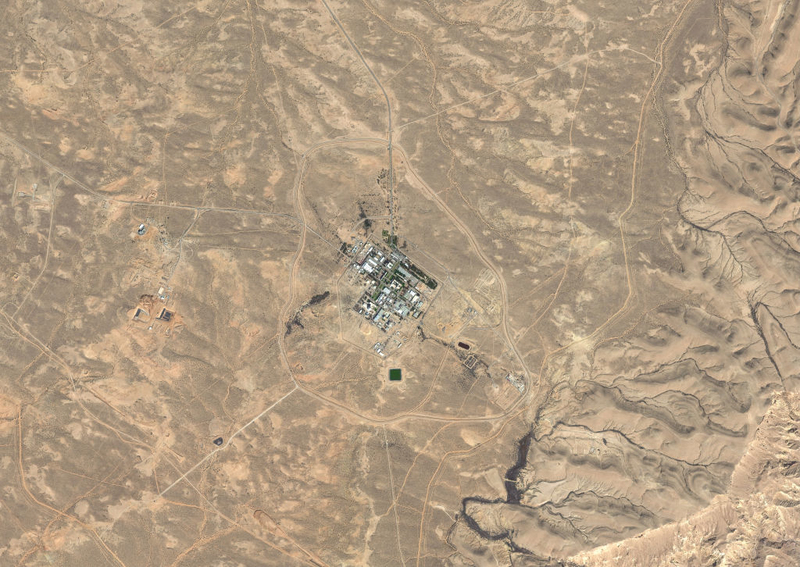
Information about the facility is highly classified. Israel declares that the nuclear reactor and research facility are intended for research purposes into atomic science. However, it is believed that the reactor is actually used to produce nuclear materials for Israel's nuclear weapons. In 1986, Mordechai Vanunu, an ex-technician at the facility, fled to the UK and revealed some evidence of Israel’s nuclear program to the media. He also explained the purpose of each building, also exposing a top-secret underground compound located right below the installation.
Israel Atomic Energy
In January 2012, the media reported that the Israel Atomic Energy Commission decided to shut down the reactor temporarily due to the center's vulnerability to attack from Iran. In October and November 2012, Hamas fired rockets at Dimona and the Negev Nuclear Research Center, but the facility was not harmed.

The airspace over the facility is closed to all aircrafts. The area around the center is heavily guarded and fenced off and necessary measures will be implemented to prevent unauthorized entry.
Tomb of Qin Shi Huang
The Terracotta Army is a set of terracotta sculptures illustrating the armies of Qin Shi Huang, the first Emperor of China. It is a type of funerary art buried with the emperor in 210–209 BCE with the purpose of keeping the emperor safe in his afterlife.
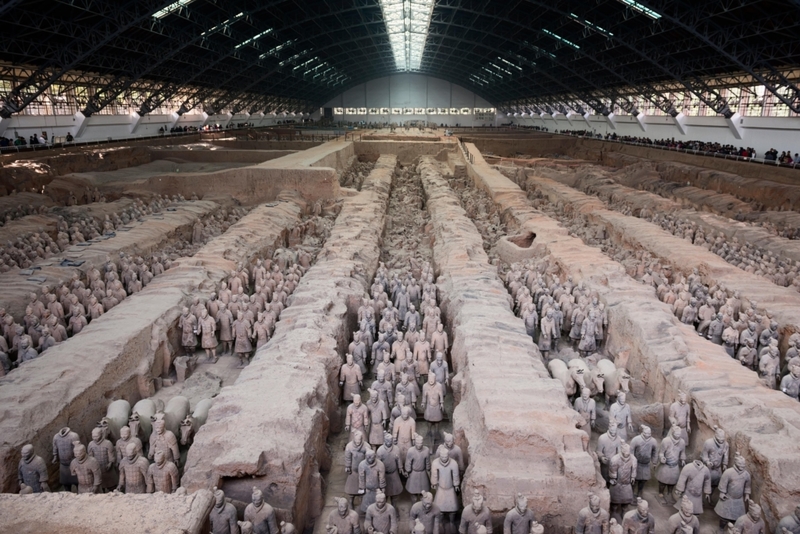
The figures date from around the late third century BCE and were found in 1974 by some local farmers in Lintong District, Xi'an, People's Republic of China, Shaanxi province. The figures differ in height according to their roles, with the tallest being the generals. Among the figures are warriors, chariots, and horses.
Terracotta Army
Estimates from 2007 claimed that the three pits housing the Terracotta Army held more than 8,000 soldiers, 130 chariots with 520 horses, and 150 cavalry horses, most of which stayed buried in the pits near Qin Shi Huang's mausoleum. Other terracotta non-military figures were discovered in other pits, including officials, acrobats, strongmen, and musicians.

The historian Sima Qian (145–90 BCE) described the construction of the tomb in his most noted work Shiji which was written a century after the mausoleum's completion. The construction of the mausoleum began in 246 BCE soon after Emperor Qin (then aged 13) took to the throne, and there were eventually 700,000 workers involved in the construction. On March 1974, farmers discovered The Terracotta Army after they dug a water well about 1.5 kilometers (0.93 mi) east of the Qin Emperor's tomb mound at Mount Li (Lishan), a region permeated with underground springs and streams.
Woomera Prohibited Area
In South Australia, approximately 450 kilometers northwest of Adelaide, you can find the RAAF Woomera Range Complex (WRC). The WRC is a major Australian military and civil aerospace facility and operation run by the Royal Australian Air Force (RAAF) which is a sect of the Australian Defense Force (ADF). The complex contains both 122,188 square kilometers of land and the airspace which the RAAF barres and controls for safety and security purposes. The WRC is a highly specialized ADF test and evaluation capability that the RAAF uses to test war material.

The word "woomera" is an Australian indigenous word that comes from the Dharug language of the Eora people of the Sydney basin; a woomera is a wooden spear-throwing device. The word was initially adopted as a suitable name for the settlement of Woomera, also called Woomera Village, which can be found within the complex.
Restricted Airspace
The complex has also been called the Anglo-Australian Long Range Weapons Establishment and following that, the Woomera Rocket Range, the RAAF Woomera Test Range in 2013, the facility was reconfigured and renamed the RAAF Woomera Range Complex. The ground area of the WRC is defined by the Woomera Prohibited Area and contains the Nurrungar Test Area, which has a land area of 122,188 square kilometers.
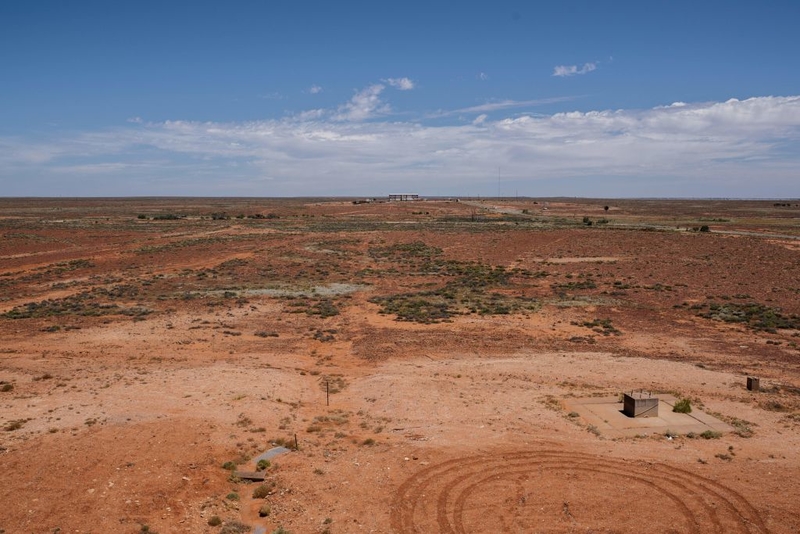
The RAAF describes the WPA as the largest land-based test range in the Western world. The Woomera Prohibited Area Coordination Office sets up daily operations of the complex which involves a mix of South Australian crown land. It is covered by pastoral leases and mining tenements given by the Government of South Australia. The Woomera Prohibited Area Advisory Board watches over the operations of the WPA and the WPACO. The airspace above the WPA which is controlled by the RAAF is referred to as the Woomera Restricted Airspace.
The Marianas Trench
You probably didn't see this one coming, did you? Best of luck trying to get there. It holds the record as the deepest known place in the ocean and only three people have succeeded in making it to the bottom. The Mariana Trench or Marianas Trench is situated in the western Pacific Ocean, approximately 200 kilometers east of the Mariana Islands. It has the deepest natural point in the world.

Its depth is 10,994 meters at the southern end of a small slot-shaped valley on its floor known as the Challenger Deep. However, there are some measures that estimate the deepest part to be 11,034 meters (36,201 feet). If you were to compare this to Mount Everest, you could drop the Mountain into the trench and at its highest point, it would be over 2 kilometers (1.2 miles) under the water.
Mount Weather
The Mount Weather Emergency Operations Center is a civilian command facility in the U.S. Commonwealth of Virginia. It functions as the center of operations for the Federal Emergency Management Agency (FEMA). It is also known as the High Point Special Facility (HPSF), its preferred title since 1991 is "SF".

The facility is a major relocation site for the highest level of civilian and military officials in the case of a national disaster. It plays an important role in the continuity of government (per the U.S. Continuity of Operations Plan). Mount Weather holds the control station for the FEMA National Radio System (FNARS), which is a high-frequency radio system connecting most federal public safety agencies and the U.S. military with most of the states.
Emergency Alert System
FNARS gives access to the president to the Emergency Alert System. The site was brought to public attention in The Washington Post, when the facility was mentioned in a report of the December 1, 1974, crash into Mount Weather of TWA Flight 514, a Boeing 727 jetliner.

On September 11, Dick Cheney and the members of Congress were taken here. The facility covers 564 acres and includes offices, dorms, and a dining room. It is located in a safe area outside of D.C. Armed guards surround the complex as well as the president's Emergency Alert System. So, it's majorly off-limits and inaccessible to most people.
Red Castle Museum
The Red Castle Museum, AKA Assaraya Alhamra Museum or the Archaeological Museum of Tripoli, is a national museum in Libya. It can be found in the historic building called the Red Castle, also known as Red Saraya.

The museum was designed in conjunction with UNESCO, and it covers 5,000 years from prehistory to the independence revolution (1953) era. The museum is situated in Tripoli's Assaria al-Hamra or Red Castle fortress, on the peninsula above and near the old town district with Medina Ghadema. The museum has an entrance to historic As-Saha al-Kradrah, the Martyrs' Square.
Colonial Ruins
The museum was constructed in 1919 when the colonial Italians in Libya turned a section of the castle into a museum to store many of the archaeological artifacts dispersed across the country since prehistoric times.

The square surrounding the castle was created by architect Florestano Di Fausto in the thirties. After the British occupation of Libya during World War II, the museum took over the entire complex of the castle and was renamed The Libyan Museum in 1948. The museum was reopened to the public in 1988, and renamed the Assaraya Alhamra Museum–Red Castle Museum, with "state-of-the-art" facilities.
Mount Kumgang
There are some pretty uncanny pictures showing the abandoned $400 million luxury tourist resort in North Korea. The building has been vacant since a South Korean woman was fatally shot there. The Mount Kumgang resort was constructed in 1998 by the South Korean company Hyundai. They also paid $1 billion for 50 years of exclusivity.
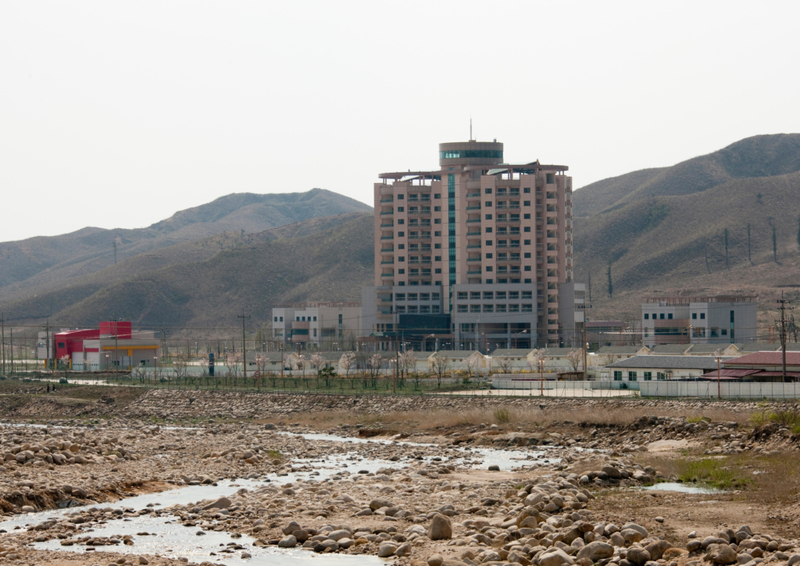
Unfortunately for their spending, a South Korean tourist named Park Wang-ja, 53 was shot there in July 2008. So, South Korea decided to stop all tours there and North Korea took hold of the resort.
Ghost Town
Now, the immaculate 500-square-kilometer complex is a complete ghost town - which is a shame because it has hotels, a spa, a fire station, a tourism office, a golf course, a supermarket, a clinic, and tours of the beautiful mountains which encompass it.

Many of the things in North Korea are questionable like North Korea's nuclear weapons development program. This is one of several reasons why governments like the U.S. and Canada have strict travel restrictions on North Korea.
US Army
At the time of the events of 9/11, then-president George Bush flew around in Air Force One and was able to identify threats from other passing aircraft which later proved to be miscommunication. The idea of assigning specific military aircraft to transport the President came about in 1943. Officials of the U.S. Army Air Forces (the predecessor to the U.S. Air Force) were doubtful of commercial airlines' ability to safely and securely transport the president.

A C-87 Liberator Express was reconstructed for use as the first dedicated VIP and presidential transport aircraft and named Guess Where II, but the Secret Service did not accept it because of its safety record. A C-54 Skymaster was then converted for presidential use.
Lascaux Caves
Have you ever seen 17,300-year-old paintings? The Lascaux Caves are home to some. The caves were first found by an 18-year-old boy named Marcel Ravidat. 8 years after the discovery, the public was allowed entry, however, as a result of the 1,200 visitors coming to the cave daily, the Paleolithic paintings were exposed to carbon dioxide, heat, humidity, and other contaminants. They experienced severe damage.

As a result of the destruction, entry to the caves was closed to the public in 1963. The paintings have since been restored to their original state and a monitoring system has been put in place. In 2001, the air conditioning system was changed in order to regulate the temperature and humidity of the cave. This led to an infestation of white mold which began to spread across the cave ceiling and walls. In 2007, a new fungus began to spread over the walls.
Restricted to Only a Few Experts
As of 2008, the cave contained black mold, and access to the cave was restricted for three months, even to scientists and preservationists. Only one person could enter the cave once a week for 20 minutes to check on the climatic conditions. Nowadays, only a few scientific experts can work in the cave for a few days a month.

Lascaux II was built in 1983 near the cave in order to present to visitors copies of the paintings from the Hall of the Bulls and the Painted Gallery without harming the original ones which are at risk for evaporation from environmental contaminants.
Queens Bedroom
The official British late Queen's bedroom can be found in Buckingham Palace. The late Queen's London residence was first established in 1705. In 1982, Michael Fagan broke in and entered the late Queen Elizabeth II's bedroom, despite that the entire residence is heavily guarded.

To this day, Michael remains one of the only men to see the inside of the room without an official invitation or building permit. For most of us, there is little hope of us ever seeing the room in the near and far off future.
North Brother Island
New York has everything. It has some of the highest buildings in the world and the best Broadway musicals. It also has an abandoned quarantine island. The East River side of the city wasn't always the way you know it. In the 19th century, people with diseases were accommodated there.

One of the most famous stories about this place is the story of Mary Mallon. Unknowingly, Mary got hundreds of people sick while cooking for them and she spend a few good years on the isolated island.
The Bird Sanctuary
These days, the deserted quarantine serves a much more pleasant purpose. It's a bird sanctuary. The sanctuary is closed to the public most of the time, however, there are exceptions held by the city council. There are dozens of species living there and it has become one of the area's biggest nesting colonies.

Researchers are occasionally allowed on the premises, and journalists are welcomed. So basically, you have to be a scientist or compelling academic to get into the deserted quarantine.
Heard Island
Australia is bigger than you might think. It's the world's biggest island and it has more territories off its shores. Heard Island is located between Madagascar and Antarctica, however, it is led by the authorities down under. On the island, there are two active volcanoes, and the place is completely deserted.

The past volcano eruptions resulted in the island being composed of limestone and garbage. There is little nature that surrounds the island, and in order to preserve it, the government has banned any entry.
Only Reached by Sea
The Heard Islands can only be reached by sea, which would require quite a journey. If you were in Australia, it would take about two weeks! It is seriously isolated.

The first visitor to this island was around 1850, making this place a stopping point between Boston and Melbourne. In 1991, the place turned into an experiment site held by the U.S. Navy. The known Heard Island Feasibility Test examined low-distance transmission, as these Islands were as far on Earth as they could get to pull this off.
Pravicicka Brana
Located in Bohemian Switzerland, part of the Czech Republic, the Pravcicka Brana is a formation of narrow rocks reaching as high as 16 meters. It is the biggest naturally created sandstone arch in all of Europe and is known as one of the most spectacular landmarks in the region.

In 1826, this magnificent place turned into a holiday resort, with its first hotel being built there. It is privately owned, meaning that only those who pay can enter.
The Magical Landscapes
Pravcicka Brana earned its place in Hollywood when the magical landscapes were used for filming The Chronicles of Narnia: The Lion, the Witch, and the Wardrobe. However, with all its fame, geologists believe the days of this outstanding creation are numbered.
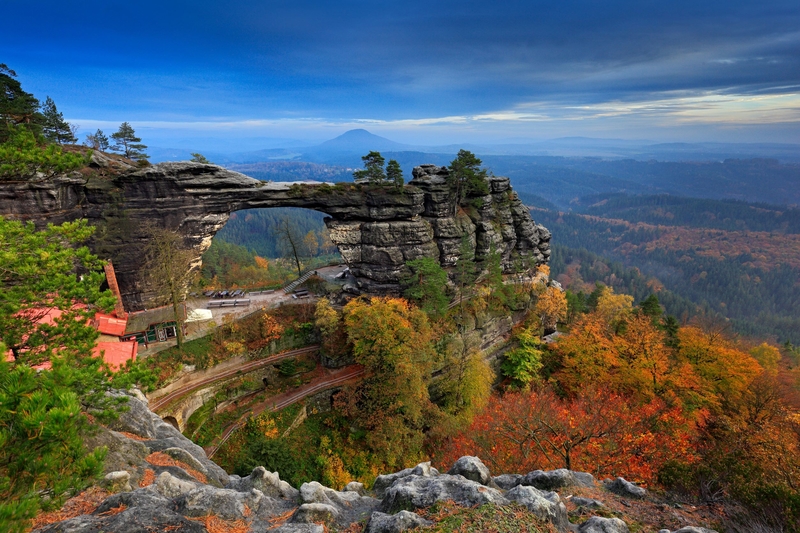
Since 1982, the bridge can no longer be crossed as the erosion that was caused by the visitors has turned the bridge unsafe. The surroundings of this supernatural place have become a must for hikers and tourists alike.
The Bhangarh Fort
The beautiful region of Rajasthan in India has a lot to offer and it is also home to one of the most restricted places on our planet. The Bhangarh Fort was built in the 16th century and has been preserved in its original state ever since.

The architecture is magnificent, but according to the locals, the Bhangarh Fort is a haunted place. Therefore, it is strictly forbidden to visit the premises after sunset and before sunrise.
Borders and Signs
There are borders and signs starting several miles before reaching the Fort, warning visitors of the restricted visiting hours. The story goes that, if anyone happens to be inside the Fort's walls when darkness comes, they will never return to tell their story.

If you ever do wish to visit here and add the Bhangarh Fort to your travels, you must prepare everything beforehand. The nearest airport is located over 100 km from the Fort, turning the place not very accessible.
Montserrat Exclusive Zone
Montserrat is part of the tropical Caribbean Islands and is considered British territory. The exclusive zone in Montserrat was formed thanks to the nearby volcanoes. There haven't been any volcanic activities since 2010, however, the place is still closed to visitors.

In 1995, chaos occurred with the eruption of the mountain. The city of Plymouth was wiped out, forcing almost all of the residents to flee their homes.
A Dangerous Place to Live
Although Montserrat is considered a dangerous place to live, many residents still refuse to leave. Living at the base of the mountain is what they know. It is their identity and they don't long for anything else.

Believe it or not, the volcano attracts tourists which then contributes to the economy of the island and the local people are true believers in fate, faith, and destiny.
Heart Reef
Heart Reef is out the first runner-up for the most photogenic place on Earth. As you can guess from the place's name, it is an astonishing reef shaped like a heart. It holds some of the most remarkable sea life and has sea species that can not be found in any other waters.

Snorkelers and divers are not allowed to dive in this area as the Australian government is doing all it can to protect this unique and extraordinary place. Flying over it in a helicopter is probably the only way to view this phenomenon.
One of The Best Attractions
The heart-shaped reef was formed naturally with no human interference. The Hear Reef is for sure one of the best attractions in all of the Whitsundays area and was only discovered in 1975.

A pilot was hovering over the area until the heart appeared in front of him. It is now recognized as one of the area's (if not Australia's) most desired diver's haven.
Chichen Itza Pyramid
We know Chichen Itza Pyramid is one of the most visited places in Mexico and millions mark this place on their to-do list, however, since 2006, climbing the Pyramid is forbidden.

The area where the pyramid stands was a city built by the Maya people, going back to the Terminal Classic time. The population in this area was very diverse, which explains the variety of architectural styles it has.
It Became Restricted
Up until 2006, you could climb the pyramid and people in their thousands did, however, one woman missed her step, which ended in tragedy. No one wanted to be responsible for further incidents, so it became restricted.

Many travelers found this ban very disappointing as climbing the Chichen Itza was known as a huge tourist attraction, and reaching the top was a challenge not everyone could accomplish. Today, the Chichen Itza Pyramid in Mexico is still a very popular visiting point even though the peak is unreachable.
Pluto's Gate
The "Ploutonion at Hierapolis", known in English as Pluto's Gate, was a religious place, in honor of the God Pluto. It is unknown when the site was built, however, nearby ruins indicate it was around 190 BC.

In ancient days, the place was thought to be dangerous and very few entered it. In 1965, the reputation and stories behind this wonder were verified by scientists.
CO2 levels
The scientist measured the CO2 levels inside the structure at night time and realized it dropped to a level that the CO2 became heavier than the air. This phenomenon created a small water pond that disappears with daylight.

Just before sunrise, the CO2 levels drop so significantly, that any living species could never survive. Going there would be a serious life risk.
Diego García
The U.S. Navy has an important military base on Diego García, making this a very strategic place. It is located between The Middle East and East Africa and it is thought that some of the CIA's floating black sites are located there.

Diego García is the largest of 60 islands, which together form the Chagos Archipelago. Commercial flights don't come here and the few yachts that circle the area, cannot enter the territorial waters.
Forbidden Since 1994
During the 1970s, the UK rented this place out to the USA, however, this led to the expedition of over 2000 natives, and even today, they are fighting to return back to their lands.

Since 1994, it is forbidden to enter Diego García. Only in rare situations, when specific activities are planned, the restriction is waived. It is a protected island, and because not many people leave their mark there, it is preserved.
Uluru
This is one of Australia's most beautiful places. Unfortunately, it is forbidden for entry, however, it hasn't been forbidden for so long. In 2019, Ayers Rock, better known as Uluru, after decades of hikers and tourists visiting the place, sadly closed its gates.
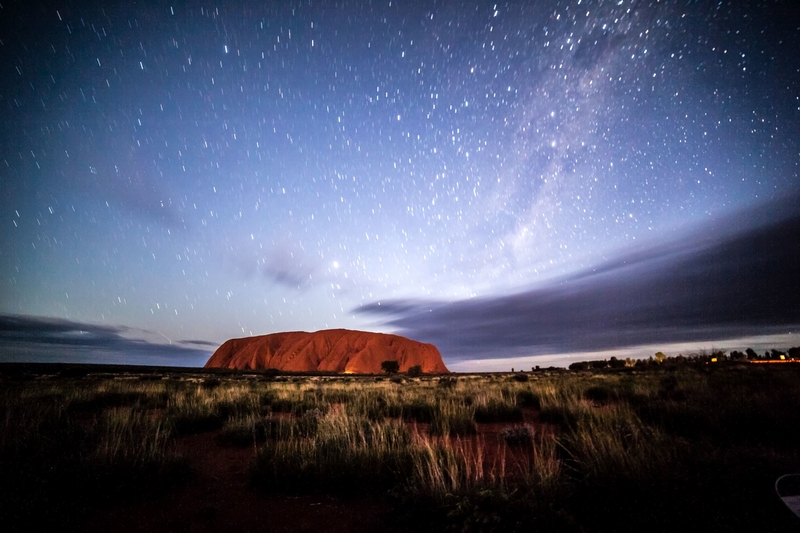
Before turning into a visitor's spot, it was a holy place for Indigenous groups. The petitions washed the streets (and the sands) and in 2017 it was announced that the sacred ground will be closed off to visitors. The ban only started taking effect in 2019.
No Climbing Allowed
Visiting the area is still allowed, and many until this day do so, however, climbing the sandy rock is no longer allowed. And there is more.

As people continued to help themselves to sand and rocks from the holy area, it is rumored that those who left with a collection of Uluru rocks reported some very bad luck that came their way. Some have even sent the rocks back to the resort, naming the rocks they took "sorry rocks."